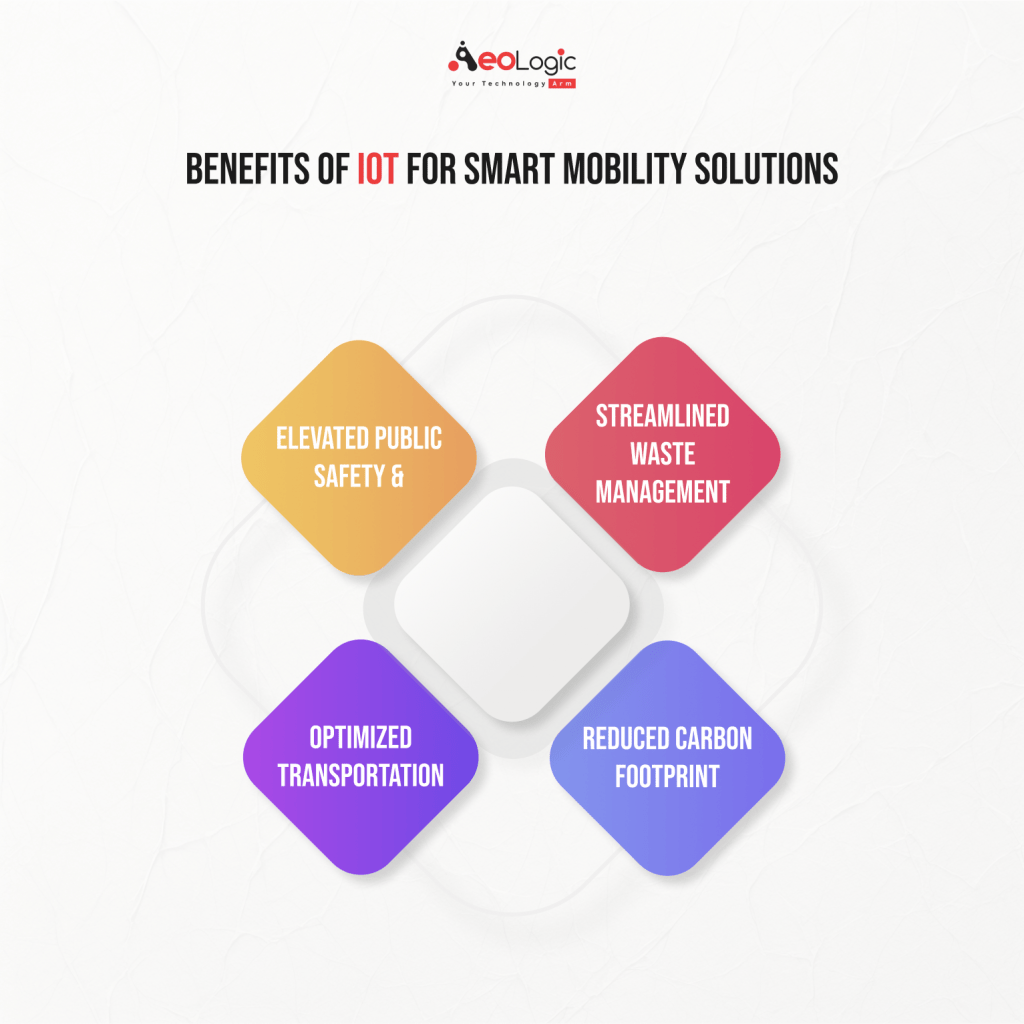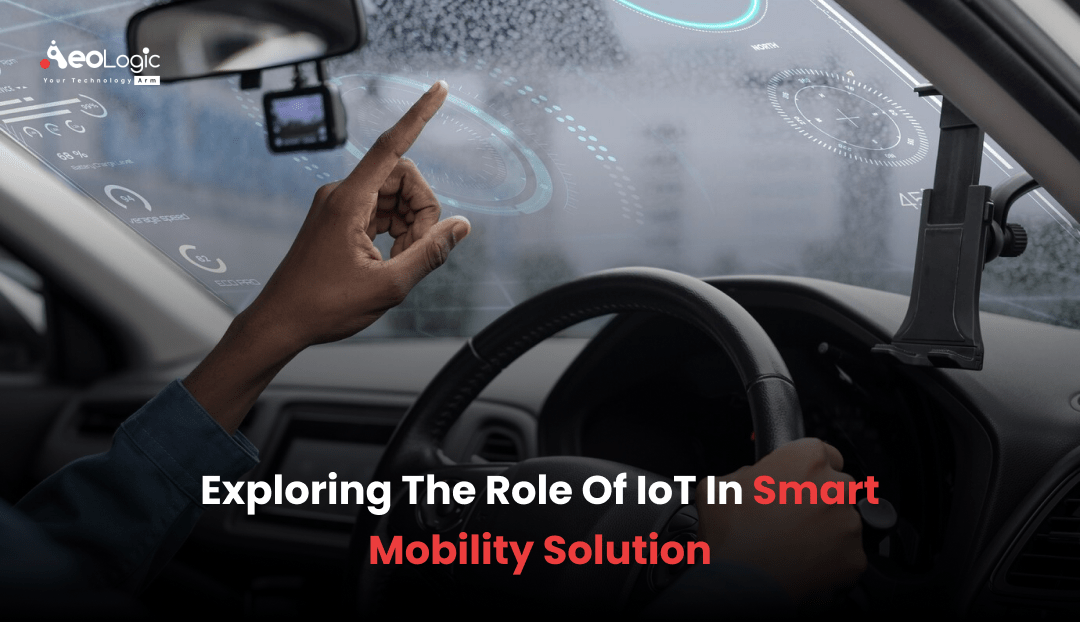Transportation is one of the important factors for any place as it can transport goods, carry people from one place to another, and much more. There are many components involved in mobility practices. Not having proper mobility practices or solutions can lead to issues creating interruptions in transportation. There is something that needs to evolve in the mobility sector as it combines people, places, etc. Many modern-day technologies can contribute to the mobility sector and IoT is one of them. IoT solutions has the abilities that can be used to enhance mobility solutions. Even IoT has been evolving mobility solutions for a few years too and holds a good market size. The IoT in Mobility Market was valued at USD 4.8 billion in 2022 and is estimated to reach USD 17.56 billion by 2030, registering a CAGR of 17.6% during the forecast period of 2022 – 2030.
Mobility is all about connectivity and IoT can connect things digitally. To make mobility solutions to smart mobility solutions, IoT-based technologies are playing their role significantly. In this article, we will discuss more about the role of IoT in exploring smart mobility solutions and we will also go through many other details about this topic.
What does IoT in Smart Mobility Solutions?
We have seen the introduction but didn’t understand what smart mobility solutions mean. So Smart mobility encompasses a wide range of transportation options like public transportation (including real-time scheduling, route optimization, seamless transit, and digital ticketing) is one example of a smart mobility service, and another one is Carpooling. As a service, mobility (MaaS).
If we talk about the IoT, then IoT or the Internet of Things refers to the collective network of connected devices and the technology that facilitates communication between devices and the cloud, as well as between the devices themselves. IoT in smart mobility solutions is a impressive integration as mentioned earlier smart mobility heavily relies on connectivity, and IoT has the impactive ability to connect things. In transportation, many factors like road infrastructure, CCTV, online maps, vehicle rear cameras, etc. can be enhanced through the Internet of technology and this overall enhances smart mobility solutions.
Also Read: The Best IoT Solutions To Revolutionize Your Business In 2024
How Does IoT Make an Impact on Smart Mobility Solutions?
It influences smart mobility solutions in different ways as IoT brings efficiency and safety to urban and rural mobility by modifying the transport experience through better traffic management, better infrastructure of roads, sensors in vehicles, alert devices, etc. Generally, we could say that the Internet of Things makes cities smarter and urban systems more convenient and easier to manage. There are many other benefits of IoT in transforming the smart mobility solutions that we will see later.
Features of IoT for Smart Mobility Solutions
IoT has many features that can enhance smart mobility solutions to connect things in better ways. Here are a few key features mentioned below.
Real-Time Information
IoT has the features to provide real-time information about the integrated things. It can be very useful in the mobility sector as it could lead to a decrease in the death count by getting information on accidents in real-time.
Seamless Connectivity
IoT has features of seamless connection that is also an incredible factor in smart mobility. This enables contactless transactions for public transportation services, and e-ticketing for the people without wasting too much time in queue.
Smart Monitoring
IoT-based sensors can smartly monitor as they can monitor the condition of roads, traffic, etc. This can lead to improvement in the infrastructure of mobility. This overall enhances the smart mobility solutions.
Benefits of IoT for Smart Mobility Solutions

Above mentioned features of IoT in the context of smart mobility solutions can offer many benefits for smart mobility solutions. Here are a few key benefits mentioned below.
1) Elevated Public Safety
Surveillance cameras and sensors powered by the Internet of Things greatly enhance public safety. They are adept at spotting possible security risks, keeping an eye on illegal activity, and tracking how quickly emergency services respond.
2) Streamlined Waste Management
Better Waste management with the use of IoT sensors is also possible as they make it easier to optimize waste collection routes that result in reducing the environmental impact of disposing of waste and its related expenses.
3) Optimized Transportation
IoT technologies streamline the routes used by public transportation, reducing traffic jams and enhancing vehicle flow. Moreover, networked vehicles can communicate with traffic control systems and with one another, resulting in safer and more effective travel.
4) Reduced Carbon Footprint
Another important aspect of smart mobility is its ability to lower our carbon impact. It accomplishes this in a variety of ways, some of which we have previously discussed.
Smart mobility optimises transportation. This optimisation results in shorter routes, reduced idling, and more fuel-efficient driving. These elements work together to reduce the carbon footprint that transportation generates.
Furthermore, smart mobility cars frequently run on clean energy. Many of them are electric or, in the case of bike-sharing, powered by people, which consumes less energy. They frequently employ energy sources other than fossil fuels. The more people use smart mobility, the lower our entire carbon footprint will be.
5) Reduced Cost
According to the NHTSA, traffic accidents cause $299.5 billion in annual economic losses. That’s a scary figure to consider, but we know we can reduce with smart mobility.
We can begin to reduce traffic accidents by implementing smart mobility, putting more money in people’s pockets and diverting government resources to more productive projects.
Also Read: How IoT Solutions Are Changing The Face Of Healthcare Industry
Challenges with IoT while using Smart Mobility Solutions
With the benefits and useful features, there are some challenges too that are mentioned below.
- Cost consideration is a concerning thing as the implementation of IoT is too high and also varies from place to place. So this could be a challenge for enhancing the smart mobility solutions with IoT.
- Data overload and analysis challenges can be a concerning factor as data on transportation in vast amounts can cause overload to the system.
- Reliability can be another challenge with IoT as there are many cases every day with the concern of the reliability of IoT. So this could be a concern.
Also Read: How Can IoT Solutions Help To Create A Sustainable Future?
Final Words
The future of Smart mobility solutions is undeniably intertwined with IoT solutions that enhance urban and rural transportation development and management. By embracing IoT technologies, cities can create more efficient and safe mobility solutions for their transportation.
Overall, IoT can enhance smart mobility solutions that way, which other technologies can never. Every nation should go with this trend to offer evolved mobility practices for the people.










